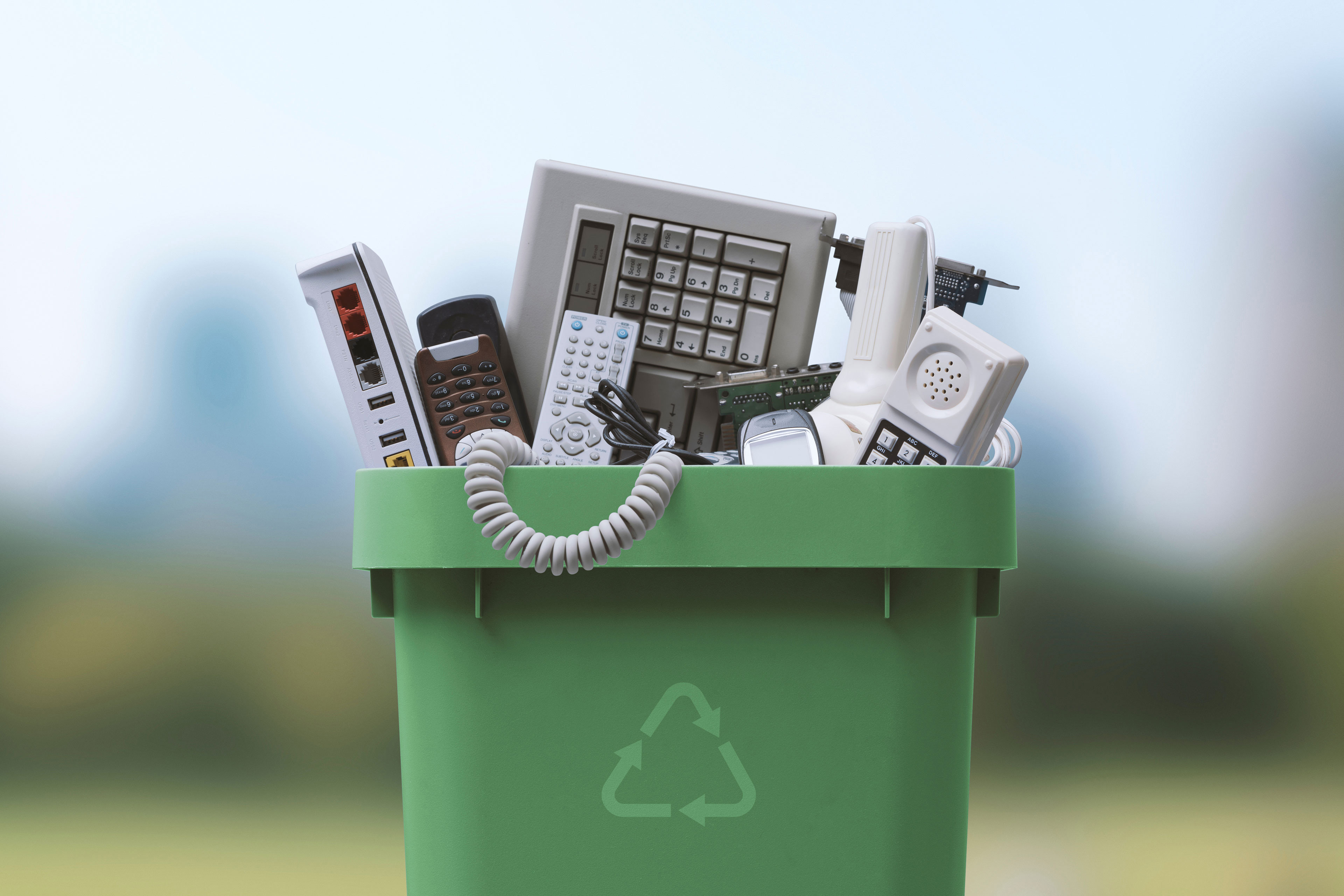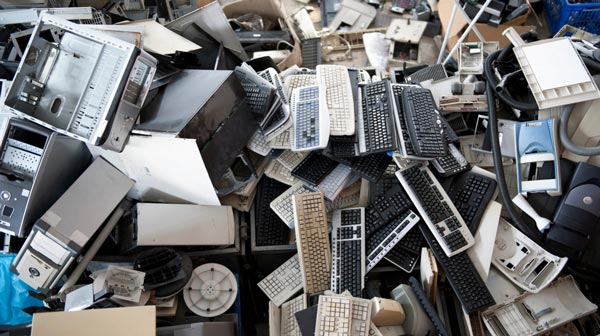Elevate Your E-Waste Administration With R2 Accreditation: a Comprehensive Overview
One secret approach to elevate e-waste administration practices is by obtaining R2 qualification. By discovering the processes and advantages linked with R2 accreditation, a much deeper understanding of just how it can transform e-waste administration strategies emerges, dropping light on a course in the direction of sustainability and ethical disposal methods.
Value of E-Waste Monitoring

When e-waste is not managed properly, these toxic compounds can seep right into the ecosystem, triggering damage to wildlife and potentially getting in the food chain, posturing risks to human wellness. The improper disposal of e-waste adds to air pollution and greenhouse gas emissions, worsening environment change and environmental destruction.

Benefits of R2 Qualification
/cdn.vox-cdn.com/uploads/chorus_image/image/63699193/recycle.0.1549465291.0.png)
First of all, R2 qualification improves reliability by showcasing a company's dedication to lasting practices. It guarantees customers, partners, and stakeholders that the firm follows rigorous standards for e-waste monitoring - r2 certification. This reliability can bring about raised trust and improved connections with clients who prioritize ecological obligation
Second of all, R2 certification assists minimize risks connected with inappropriate e-waste disposal. By following the stringent standards set forth by the certification, companies can decrease the likelihood of data violations, ecological contamination, and legal repercussions. This positive strategy safeguards the firm's credibility and lessens possible responsibilities.
Lastly, R2 certification demonstrates a commitment to ecological stewardship - r2 certification. By sensibly taking care of digital waste through certified processes, organizations contribute to the conservation of resources, reduction of contamination, and promotion of a circular economic climate. This dedication not just profits the atmosphere however likewise lines up with progressing customer assumptions for lasting service methods
R2 Accreditation Refine Introduction
Having established the benefits of R2 certification in promoting reliability, risk mitigation, and ecological stewardship, it is necessary to currently lay out the detailed process involved in getting this qualification. The R2 accreditation process begins with a comprehensive review of the company's functional policies and procedures to make certain conformity with the R2 requirement. This initial assessment check my site is critical in recognizing any type of gaps that require to be attended to before proceeding better.
When the organization's techniques line up with the R2 basic needs, an independent third-party auditor conducts an on-site audit to review the application and effectiveness of these techniques. This audit includes a comprehensive testimonial of paperwork, meetings with personnel, and physical inspections of centers to verify conformity.
Complying with an effective audit, the organization obtains an accreditation choice based on the auditor's searchings for. If authorized, the company is given R2 qualification, demonstrating its dedication to responsible e-waste monitoring. It is necessary to keep look at here in mind that maintaining R2 accreditation requires continuous conformity with the standard's demands and periodic audits to make sure ongoing adherence to best methods in e-waste recycling and disposal.
Trick Requirements for R2 Conformity
A vital facet of achieving R2 compliance is making certain that all electronic waste (e-waste) processing centers fulfill strict ecological and safety and security standards. To comply with R2 demands, organizations have to comply with essential requirements that concentrate on responsible e-waste administration practices. These criteria include applying a recorded environmental, health, and security monitoring system, ensuring the safe handling of data-containing devices, and conducting complete downstream due persistance to track the last location of e-waste products.
Moreover, R2 compliance necessitates the proper testing, refurbishment, and recycling of digital devices to prolong its beneficial life and decrease ecological influence. Facilities looking for R2 qualification have to also prioritize employee wellness and security by offering needed training, individual protective tools, and a safe working atmosphere. Furthermore, preserving detailed documents of e-waste handling tasks and frequently going through audits by certified licensing bodies are vital parts of showing ongoing compliance with R2 standards.
Impacts of Sustainable E-Waste Practices
The implementation of lasting e-waste practices in accordance with R2 conformity not only guarantees environmental and safety criteria are fulfilled but additionally dramatically affects the total lifecycle of electronic items. By adhering to R2 requirements, digital waste administration procedures end up being a lot more efficient, minimizing the ecological footprint of digital products. Lasting e-waste methods assist in the appropriate disposal of digital parts, ensuring that dangerous materials are managed sensibly and do not wind up contaminating the environment.
In addition, lasting e-waste practices can contribute to job production in the recycling and repair fields, cultivating economic growth while promoting ecological duty. In general, the fostering of sustainable e-waste techniques under R2 accreditation serves as an essential step towards attaining a more ecologically lasting electronic devices market.
Final Thought
To conclude, applying correct e-waste monitoring practices is critical for environmental sustainability and resource preservation. R2 accreditation plays an essential role in making sure liable handling and disposal of digital waste. By sticking to the stringent requirements stated by R2 requirements, companies can not only minimize their ecological influence but likewise contribute to an extra lasting future for generations to find.
One key method to raise e-waste management methods is by attaining R2 accreditation. By checking out the advantages and processes linked with R2 accreditation, a deeper understanding of just how it can transform e-waste monitoring strategies emerges, losing light on a path in the direction of sustainability and ethical disposal methods.
The R2 qualification process starts with a thorough testimonial of the that site organization's operational policies and procedures to guarantee compliance with the R2 criterion. If authorized, the organization is given R2 certification, demonstrating its dedication to liable e-waste administration. In general, the adoption of lasting e-waste methods under R2 accreditation offers as a critical step in the direction of attaining a much more environmentally sustainable electronic devices sector.